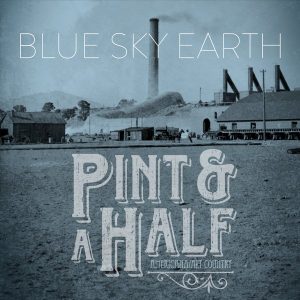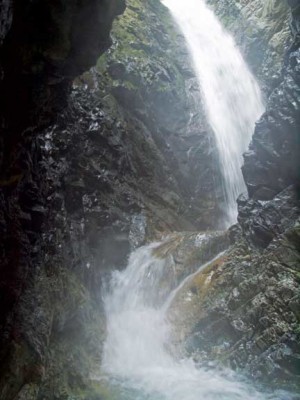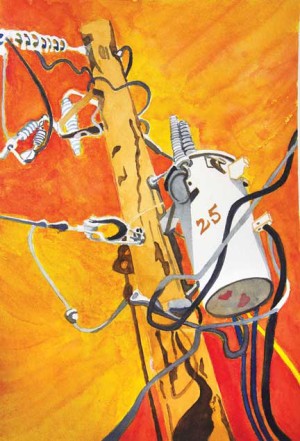by George Sibley
A couple months ago I wrote about the “One Valley Prosperity Project” (OVPP) in the Upper Gunnison Basin – the western part of Central Colorado. This is our valley’s latest assault on the challenge of economic development for high remote mountain valleys.
Most recently, to better inform the discussion, the county-led OVPP task force generated a “State of the Valley” report. The report does not gild the lily; it digs into some serious valley situations. And by virtually all conventional statistical measures, we indeed look like a place in need of a “prosperity project” – or maybe just a survival project.
The first three report sections that get down to specific statistical analyses of valley issues are titled “Our Economy,” “Our Housing,” and “Our Poverty” – an ominous progression, and indeed there is little in any of the three sections that is reassuring. Some highlights:
Job growth is one-third of the state level and is primarily low-wage service sector jobs.
Average earnings per job valley-wide is $35,000, 2/3 of the state average.
Median household income is $52,300 and is below other comparable resort and tourism counties.
Considerable material inequity exists between public sector jobs (average above $50,000) and private sector and retail jobs (below $40,000 – for owners as well as employees). And that doesn’t include the second home owners, whose manor-scale wealth is evident in the valley.
Speaking of which, in a valley very short on affordable housing, almost half of the valley’s 11,100 housing units are described as “vacant” – most of them second homes. Sixty percent of property tax bills are sent out of the county.
Only nine percent of the people who work in Crested Butte can afford to rent or buy housing there; countywide, only a little over half the people can afford to rent or buy within the 30-percent-of-income guideline.
Given all of these factors, one-sixth of the valley population falls below the federal poverty level of $24,250. But by a “self-sufficiency” index based on local costs for essentials like health care, transportation, child care, food, clothing and taxes as well as housing, an Upper Gunnison family of four needs a household income of $58,800 – which means, given that a median family income of $52,300, more than half the households in the valley are either on public assistance or are skimping on essentials like health care. Twenty-five percent of children under 18 live in poverty – 8 percent higher than the state tally.
One could go on in that vein – but I am more intrigued by some other things in the report that seem to counter or even deny the drab portrait found in the statistical information. The first phase of the “One Valley Prosperity Project,” for example, was a long process of articulating the values that move us in how and why we live here in these mountain valleys. After many meetings around the valley and a semi-objective analysis of what was said in those meetings, we came up with seven motivating values, paraphrased here from the “State of the Valley” report:
A healthy and active lifestyle that allows us to live meaningful lives filled with a sense of adventure and joy.
A simple life in communities with a slower pace so we have more time to do the things that matter the most, making us happier and healthier.
An engaged community with an openness and human scale that nurture a creative, civil and engaging environment for personal contribution to our well-being and betterment.
A safe and caring community whose people believe in creating an atmosphere of tolerance and unity, fostering a sense of belonging and a more gratifying life.
Connection to nature through our Valley’s ranching community and incredible natural setting, contributing to our spiritual well-being and our commitment to environmental stewardship.
A nurturing family environment, which is a good place to raise our kids because it provides a strong educational foundation, authentic relationships and peace of mind.
A learning community with exceptional educational opportunities for all ages, providing an intellectually interesting and stimulating life.
These values are a little perplexing, because the ultimate goal of the whole prosperity project is to provide new insights on economic development for the valley, which one might presume is to address the report’s recitation of poor wages, unaffordable housing and inequity, with half of the population underwater on the self-sufficiency index. Yet the things we say we value about the valley suggest we live in a Shangri-la of health, happiness and, yes, prosperity.
One could look at that disconnect between values and, well, realities, and think maybe it’s because the people described in the economic, housing and poverty sections aren’t showing up at the OVPP meetings. There is some truth to that. Not many of the people on SNAP who are working two jobs are at the meetings, for obvious reasons – and at the other end of the spectrum, very few of the people who own the 5,000 second homes in the valley show up either. The people who show up are what you might call the well-meaning people – political liberals, homeowners on the plus side of the self-sufficiency index, school and university faculty, a handful of teens and twenty-somethings, most of us volunteers for the valley’s 113 nonprofits.
A look at those volunteer-driven nonprofits is interesting in this context. Only nine of them are classified as “Health and Human Services”; another 11 are “Community Development.” Of the rest, 16 focus on “Environment”; four on “Animal Welfare”; 17 are “Recreation” oriented; 10 are “Arts and Culture”; 21 are “Education.” It is a distribution that clearly reflects the derived values, but with no real focus on the fundamental economic and social problems.
This is also evident in some of the other “big things” going on in the valley:
The wealthy set up-valley – mostly second-home people – has raised $18 million toward a huge $23.5 million performing arts center near the ski resort.
The Town Council of Crested Butte – where businesses are slashing their hours this summer due to a lack of suitable employees (a function of wage and housing conditions) – has just committed a million dollars to enlarging and enhancing the town’s Center for the Arts.
A valley-wide sales tax is dedicated to buying development rights on agricultural lands in order to preserve open space in the valley.
Funds have been raised for not one but two animal shelters for the valley, but no formal shelter exists for domestic-abuse victims.
[InContentAdTwo]
It is hard to make such a list without a slight sniff of approbation, but what the hell: I live here, and none of my own volunteer activities directly address “our poverty” either. I long ago left the ever-changing ranks of the economic development committees. Do we all just not care that a quarter of our kids grow up in poverty?
I’m going to just dodge that question, for the moment or maybe the year, and relate my own earlier experience “living poor” in the Upper Gunnison back in the ‘60s and ‘70s. I’ve lived in rundown houses with up to four roommates in Crested Butte. As that town’s first post-bankruptcy newspaper editor, I lived rent-free in an old barroom without ever telling the IRS, and occasionally discounted an ad for next week’s paper in order to cover this week’s bar tab. After I got married and pregnant (totally irresponsibly, as we poor often do), my wife and I tried to live off of our artistic output while winter-caretaking the Rocky Mountain Biological Laboratory five miles past the end of the plowed road. When we moved back to town, we always seemed to find a way to scrape by between the erratic art output and part-time jobs. We were never on public assistance, but we had no health insurance, and our two children would have qualified for free lunches if they had existed.
The thing is, we didn’t feel poor. We did later, when we moved to the Front Range for a few years, but that’s another story. In the Upper Gunnison we both tended to volunteer for a lot of public ventures of one kind or another; we dreamed big dreams with others, some prosperous and some poor like us, on big, impractical visions like the Summer University of the Rockies, art festivals or a Rural Communities Institute. In most respects, the disconnects between Shangri-la values and real-world statistics captured in the OVPP “State of the Valley” report are the story of my own decades in the valley. I eventually lucked onto the public-sector gravy train, but I loved the early years no less.
And – I don’t have the foggiest idea what to say about that. Except to say, for now, that we Americans might know a lot about individual prosperity and poverty, but not very much at all about real community prosperity and poverty. Here in this declining and spiritually impoverished nation that is falling apart, we can’t find a way to even fix up what it once had, let alone to move positively and creatively into the future. In the Upper Gunnison, I think we’re at least into an interesting exploration of this strange disconnect between our belief that we have good lives in a great place and the uncomfortable fact that so many of us here are living on the edge.
George Sibley writes from Gunnison, where he lives a rich life on the cheap.



